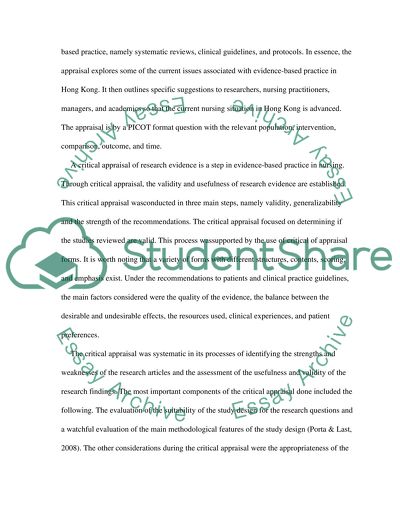Retrieved from https://studentshare.org/nursing/1696841-the-critical-appraisal-of-the-research-evidence-associated-with-an-area-of-my-professional
https://studentshare.org/nursing/1696841-the-critical-appraisal-of-the-research-evidence-associated-with-an-area-of-my-professional.


